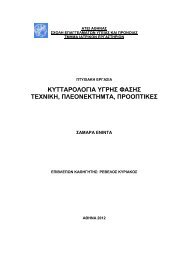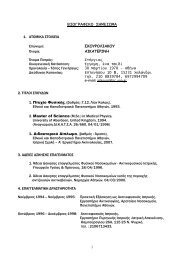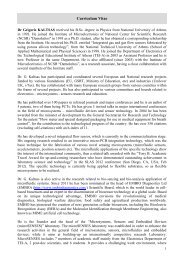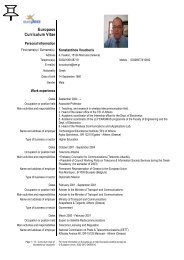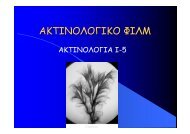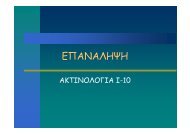Ultrospec 2100 pro User Manual
Ultrospec 2100 pro User Manual
Ultrospec 2100 pro User Manual
Create successful ePaper yourself
Turn your PDF publications into a flip-book with our unique Google optimized e-Paper software.
Nucleic Modes (3)<br />
Nucleic acids can be quantified at 260 nm because it is well established that a<br />
solution of DNA or RNA with an optical density of 1.0 has a concentration of 50 or<br />
40 µg/ml, respectively, in a 10mm pathlength cell. Oligonucleotides, as a rule of<br />
thumb, have a corresponding factor of 33 µg/ml, although this does vary with base<br />
composition.<br />
Extracting nucleic acids from cells is accompanied by <strong>pro</strong>tein, and extensive<br />
purification is required to separate the <strong>pro</strong>tein impurity. The 260/280 ratio gives an<br />
indication of purity; it is only this, however, and not a definitive assessment. Pure<br />
DNA and RNA preparations have expected ratios of ≥ 1.8 and ≥ 2.0, respectively;<br />
deviations from this indicate the presence of <strong>pro</strong>tein impurity in the sample, but<br />
care must be taken in interpretation of results. An elevated absorbance at 230 nm<br />
can indicate the presence of impurities as well; 230 nm is near the absorbance<br />
maximum of peptide bonds and also indicates buffer contamination since Tris,<br />
EDTA and other buffer salts absorb at this wavelength. When measuring RNA<br />
samples, the 260/230 ratio should be > 2.0; a ratio lower than this is generally<br />
indicative of contamination with guanidinium thiocyanate, a reagent commonly<br />
used in RNA purification and which absorbs over the 230 - 260 nm range.<br />
Background correction at a wavelength totally separate from the nucleic acid and<br />
<strong>pro</strong>tein peaks at 260 and 280 nm, respectively, is sometimes used to compensate for<br />
the effects of background absorbance. The wavelength used is 320 nm and it can<br />
allow for the effects of turbidity, high absorbance buffer solution and the use of<br />
reduced aperture cells.<br />
The instrument calculates concentration, displays 260/280 and 260/230 ratios, and<br />
compensates for dilution and use of cells that do not have 10mm pathlength. A<br />
wavelength scan of a sample can also be obtained for visual inspection of integrity.<br />
The <strong>pro</strong>cedure is as follows for DNA (3.1), RNA (3.2) and oligo (3.3):<br />
Enter pathlength of cell; 10mm (1), 5mm (2), 2mm (3), 1mm (4) or 0.5mm<br />
(5)<br />
Select units; µg/ml (1), ng/µl (2) or µg/µl (3)<br />
Select if background correction at 320 nm is required<br />
Select if sample scan is required (scans 220 to 330 nm, with autoscaling)<br />
Enter dilution factor<br />
[Oligo (3.3) only; enter conversion factor. If not known, use 33]<br />
Insert reference and press green run key<br />
This reference scan is used for subsequent samples until changed<br />
Insert samples as required and press (repeat as necessary)<br />
___________________________________________________________________<br />
12 <strong>Ultrospec</strong> <strong>2100</strong> <strong>pro</strong>, English Issue 06 - 12/2003



